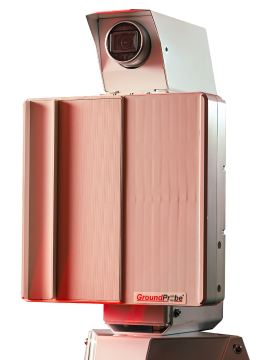Choosing the Right Geotechnical Monitoring Solution

 GroundProbe Head of Group Business Development, Antonio Rocha
GroundProbe Head of Group Business Development, Antonio Rocha
To define the appropriate monitoring solution for a geotechnical structure, a geotechnical engineer must consider several factors, such as the most potential failure mechanism, a trusted monitoring solution provider, and technical & economical elements in his analysis. The monitoring strategy plays a crucial role in this decision-making process.
The graph below illustrates this concept effectively. On the horizontal axis, we have the degree of risk of the geotechnical structure intended to be monitored. On the vertical axis, we see the level of intensity required for monitoring this structure.
The higher the geotechnical risk, the more intense the monitoring needs to be. As we increase in intensity, so do precision, coverage, data acquisition, and investment.
The graph (below) separates two major strategies by a dotted vertical line – Geotechnical Risk Management (on the left) and Emergency Management (on the right).
Geotechnical Risk Management
Monitoring in this phase aims to generate data, monitor trends, and understand the behaviour of the structure, also known as background monitoring. As movement and risk increase, the strategy shifts to safety-critical data supporting safety decisions, such as maintaining operations or evacuating the area.
Key Tools:
- InSAR: Covers vast areas with precision and lower frequency of readings, identifying problems in their early stages and monitoring trends as risk increases.
- Local Sensors (GNSS, inclinometers, conventional geotechnical instrumentation): These are very precise and punctual but do not cover an area.
- Laser Solutions (Robotic Total Stations): Allows for the installation of a network of prisms to cover large areas, though data acquisition time can be sacrificed.
- Slope Stability Radars: Represent the pinnacle in terms of coverage, precision, data generation and safety critical solution.
Emergency Management
This phase is the last level of risk management when data indicates that a collapse is happening at that moment. These systems are designed for ultra-fast failures, such as dam failures, avalanches, and rock falls.
It’s essential to remember that no monitoring solution provides all the answers. Choosing a solution is always a trade-off that may prioritize one parameter over another.
— Antonio
GroundProbe is a global technology leader specializing in real-time solutions for monitoring geotechnical risks. With the broadest range of technologies and services and a truly global support presence, we can offer a complete, customized solution for your needs.
#GeotechnicalEngineering #RiskManagement #MonitoringSolutions #GroundProbe #SafetyFirst





